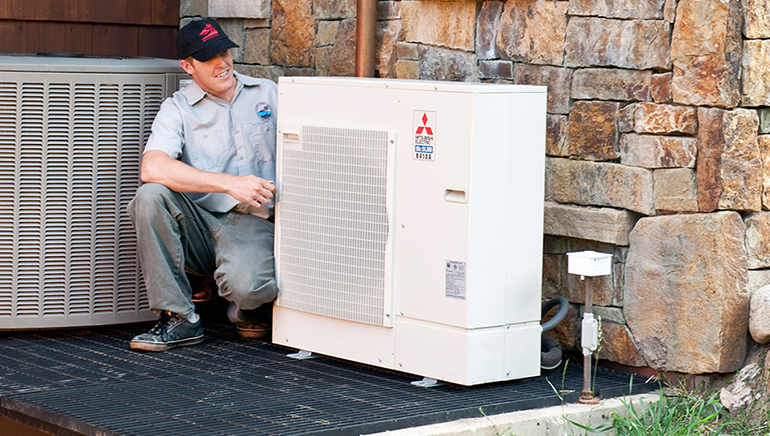
Ductless systems can be installed to heat and cool your home much like a typical heating and cooling system would, but they don’t require extensive and intrusive ductwork to carry and distribute air throughout your home.
For certain types of spaces, such as home additions, hard to heat or cool areas, older homes with no ductwork, or new constructions, a ductless system can be more energy efficient and cost effective than a central air system.
Let's explore more about what they are, how they work, and the many advantages they offer.
How do ductless systems work?
Also called mini-split or ductless heat pumps, these systems consist of two primary components: an outdoor unit and one or more (usually wall-mounted) indoor units. Ductless installation is a breeze compared to central air since no ductwork is installed (which often requires the opening up and rebuilding of walls and/or ceilings). In a ductless system, you can install up to eight indoor units for every single outdoor unit.
Heat and Cool Specific Areas
Ductless units are very flexible—you can install them virtually anywhere! Strategically set up units by splitting your building into different zones. For example, if you have an area where you spend much of your time, like the kitchen and living room, you could install a unit in this area, and control it separately from the rest of your home or other zones. Adjust different zones to suit your needs. If you don't use a certain area often, turn the unit in that zone down or off.
Maybe one family member likes it cold during the summer, while another may like a more moderate temperature. Or, if one area receives more sunlight, it may naturally be warmer and need more conditioned air pumped into the space than an area that’s in the shade much of the day. Use a remote control or your smartphone to adjust the temperatures throughout your home. It’s a quick, easy, and effective way to keep your space comfortable for everyone.
If you also have a central air unit, you could turn it to low or off when outdoor temperatures are mild, and adjust the temperature on your ductless unit to be exactly what you want in the area you're using. This system has the potential to save you a lot of money since you’ll be using much less energy than you would heating or cooling your entire home.
Save Money & Energy
Ductwork, used in central air systems, can be inefficient and bulky. According to the U.S. Department of Energy, “duct losses can account for more than 30% of energy consumption for space conditioning.” When air is forced through ductwork all throughout your home, a substantial amount of that air can leak out before it even reaches its destination, which is a huge waste. Ductless units blow air directly into the space it means to heat or cool, so conditioned air is used as intended.
Ductless systems utilize heat pump technology, so heat is transferred instead of generated. This saves substantial energy to help reduce waste and consequently, lower your energy bills! Not only that, but your total carbon output will also be less. According to Mitsubishi Electric, ductless systems use a special type of refrigerant, R410A, which has zero ozone depletion potential.
Improve Indoor Air Quality
Air ducts can become full of dust and allergens if they aren’t cleaned regularly. Even when they are, it’s difficult to remove all of the particulates throughout the system in hard-to-reach areas, and they often end up being circulated throughout your home, polluting the air. Ductless systems are easier to maintain, and they have built-in filtration systems that can remove odors, trap and kill allergens, and improve your indoor air quality.
Do you have other HVAC questions? We’ve got answers. Continue reading to get answers to the HVAC questions we hear most often.

